From studies on the restoration of the Co Loa crossbow to the hypothesis of the Tay Son “dragon fire” containing phosphorus and the policy of protecting saltpeter and “white gold” resources of the 18th century, engineer Thanh presents a perspective, affirming that King Quang Trung’s thinking shows a vision beyond the times, connecting military intelligence and awareness of protecting Dai Viet’s resources.
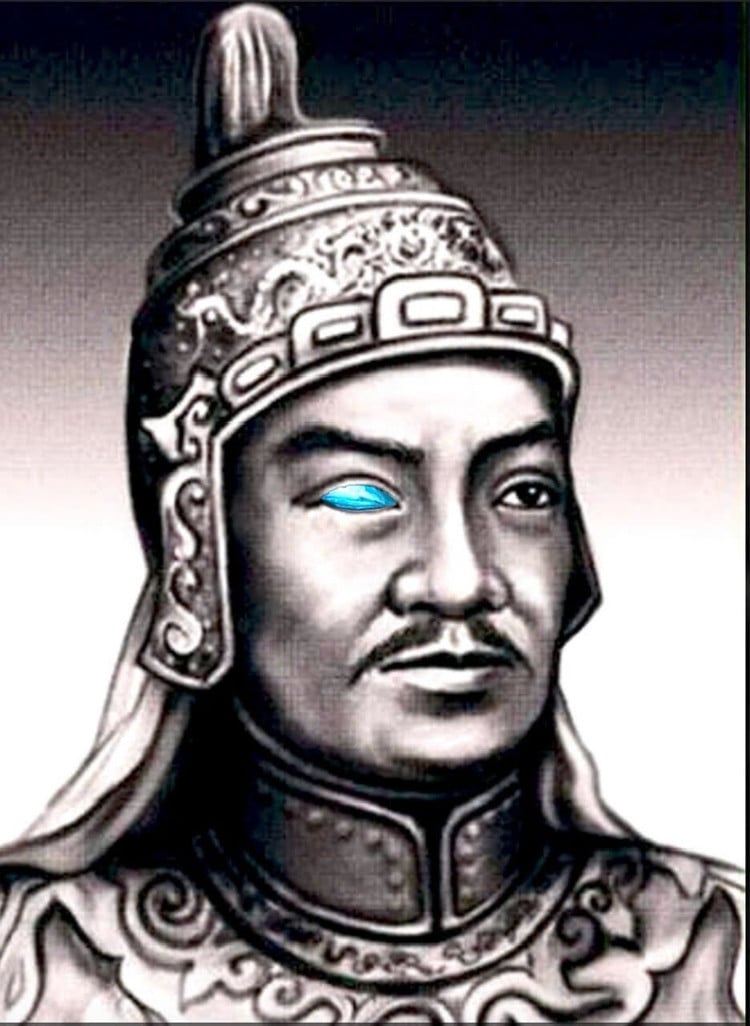
The invincible Emperor Quang Trung had eyes that glowed at night thanks to phosphorus. When wet, phosphorus only glows but does not burn. Source: Architect Vu Dinh Thanh.
When Tay Son weapons are looked back through the glowing phosphorus hypothesis
In the flow of Vietnamese history, Emperor Quang Trung – Nguyen Hue is always remembered as a hero in cloth “who won every battle”. But from the perspective of weapons engineer Vu Dinh Thanh, representative of NPO ALMAZ Group (Russia), who restored the Co Loa crossbow, King Quang Trung also left a deep mark on scientific thinking and the ability to apply military technology at that time.
After more than 6 years of studying the Tay Son firearms manufacturing technique, engineer Thanh made a remarkable observation: the Tay Son army used weapons containing phosphorus, a special combustible substance that created a strong fire effect with the extremely dangerous effect of quickly eliminating oxygen over a large area.
“Fireballs and fire tigers, fierce fire-generating weapons that history books likened to fire breathed by dragons, contained pure phosphorus or a mixture of phosphorus with pine resin and petroleum. When launched, they spontaneously ignited at temperatures of over 2,000 degrees Celsius, not only causing severe burns but also creating an effect that quickly eliminated oxygen over a large area, causing the enemy to suffocate or lose the ability to fight,” said engineer Thanh.
According to engineer Thanh, this was a factor that helped the Tay Son army achieve a lightning victory in the Ky Dau 1789 campaign.
This comment was highly appreciated by Senior Lieutenant General, Academician, Doctor, Hero of the People's Armed Forces Nguyen Huy Hieu, former Deputy Minister of National Defense , as "a scientific approach to history".
However, both said that more archaeological, chemical and documentary evidence is needed for verification.

King Quang Trung's phosphorus weapons: fireballs with pure phosphorus, fire tigers with a mixture of pine resin mixed with petroleum and phosphorus.
Another hypothesis put forward by engineer Vu Dinh Thanh is that King Quang Trung and some Tay Son generals may have suffered health effects while researching and testing firearms containing phosphorus.
He raised the suspicion that King Quang Trung and his courtiers might have suffered from phosphorus poisoning due to long-term exposure during the manufacturing and testing of this special weapon. And after the victory at Dong Da, the Tay Son army could not immediately advance to the South to pursue the remnants of Nguyen Anh's army because many soldiers had suffered health effects from residual phosphorus fumes.
"This is a new observation that needs to be considered carefully, but this hypothesis opens up a scientific medical approach to the sudden death of King Quang Trung at the age of 39, a great loss that turned our country's history in a different direction," said engineer Vu Dinh Thanh.
Before researching Tay Son, engineer Vu Dinh Thanh attracted attention when he successfully restored the Co Loa crossbow, a symbol of ancient Au Lac weapons. Through hundreds of experiments, he proved that the crossbow could launch dozens of bronze arrows at the same time, using the principle of gravity to cause damage, a principle similar to the American bunker-piercing bomb.
Thanks to the force of gravity, when shot at high altitude, the bronze arrow from the magic crossbow can completely penetrate iron armor at the farthest distance, while the Qin crossbow's damage is due to the weaker firing force the farther away. Thanks to this discovery, later generations have the basis to believe that the magic crossbow with ten thousand arrows killing ten thousand enemies is real and question Trieu Da's occupation of Au Lac because Trieu Da did not have this technology.
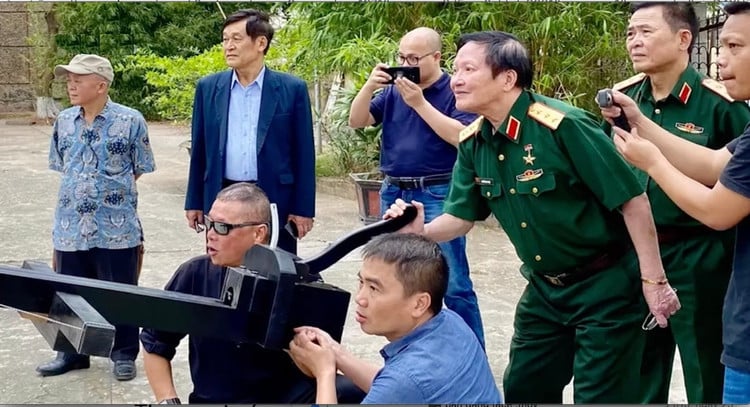
Senior Lieutenant General, Academician, Doctor, Hero of the People's Armed Forces Nguyen Huy Hieu; Lieutenant General, Professor, Doctor Nguyen Dinh Chien; Colonel, Professor, Doctor Le Dinh Sy; Colonel, Professor, Doctor Vu Tang Bong; archer Pham Quang Minh and engineer Vu Dinh Thanh shot the restored crossbow.
From that restoration, he believes that ancient Vietnamese military techniques are always associated with creative thinking and scientific understanding. Looking back at the Quang Trung dynasty, that inheritance is clearly demonstrated through the ability to manufacture firearms, organize weapons and especially the awareness of protecting resources, the foundation for military strength.
From here, engineer Thanh expanded his approach: studying Vietnamese history not only through battles but also through the scientific and technological knowledge that his fathers had.
Saltpeter, the “white gold” of the 18th century and the vision of Dai Viet
One of the points that engineer Thanh was particularly interested in was the “strategic goods” that made the West’s East India Companies particularly interested in Vietnam, which was bat and bird droppings, a valuable source of raw materials for the production of saltpeter (potassium nitrate), the key ingredient in black gunpowder (75% saltpeter, 15% charcoal, 10% sulfur) before the advent of modern explosives (1884).
According to international documents, in the 17th-19th centuries, Europe was heavily dependent on saltpeter imported from Asia, including Indochina. At that time, saltpeter was considered a strategic resource, equivalent to oil, uranium or rare earths later, because without saltpeter, it was impossible to produce gunpowder and expand military power.
Therefore, many Western merchants and missionaries, including members of the French East India Company (Compagnie française des Indes orientales), sought to establish relations with domestic powers to exploit this resource.
Engineer Thanh believes that the “missionary – commercial – military” activities of the West in the 18th century were always closely linked, and the French East India Company, as well as the British, Dutch, and Portuguese East India Companies, were all tools to exploit and control precious raw materials for saltpeter production for colonial expansion.
Individuals like Bishop Pigneau de Behaine had both a religious mission and a supporting role for Nguyen Anh during the turbulent period of the late 18th century. Nguyen Anh's cooperation with them was not simply a matter of seeking help, but reflected the complex interplay between politics, commerce and international interests during the transitional period of Vietnamese history.
Engineer Vu Dinh Thanh said that it is noteworthy that, fully aware of the importance of this resource, King Quang Trung had a strict protection policy, not allowing outside forces to exploit it. Meanwhile, at the same time, some countries or forces in the region allowed East India companies to access similar resources, leading to deep intervention by European empires in their internal affairs, leading to the loss of sovereignty.
From that perspective, King Quang Trung was not only the one who defeated foreign invaders by military means, but also the one who protected the country's sovereignty, resources, and economy from the prying eyes of Western powers.
“Although history has not officially recorded this, the idea is worth pondering in the current context, when the issues of “resource security” and “economic sovereignty” are still global concerns,” Mr. Thanh said.
According to engineer Vu Dinh Thanh, the above discoveries and hypotheses need to be scientifically verified, but have suggested an important point: Vietnamese history needs to be viewed not only through military achievements but also through the lens of science, technology and economics.
From the Co Loa crossbow to the Tay Son firearms, from phosphorus to saltpeter, it is a testament to the creative thinking and self-reliance of the Vietnamese people throughout thousands of years of building and defending the country. Quang Trung - Nguyen Hue. Therefore, it is not only a symbol of patriotism, but also a symbol of Vietnamese intelligence, always knowing how to utilize science and creativity to protect the Fatherland.
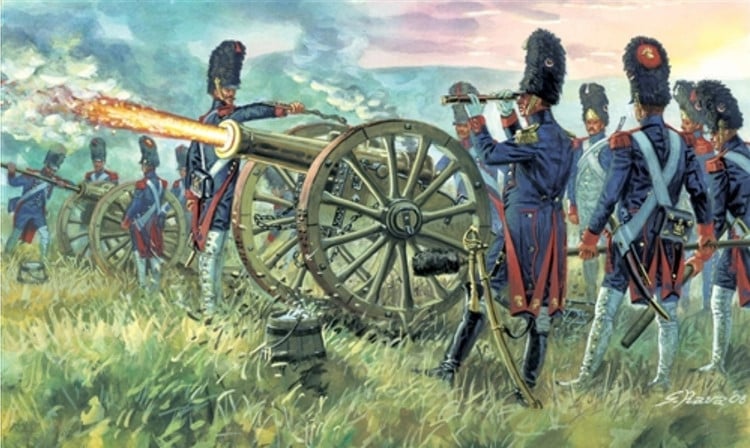
Engineer Thanh asserted that there is sufficient evidence to show that saltpeter from Vietnam was the main ingredient of French gunpowder.
Source: https://khoahocdoisong.vn/tai-nguyen-vang-trang-va-tu-duy-chien-luoc-cua-vua-quang-trung-post2149067461.html



![[Photo] Prime Minister Pham Minh Chinh receives Lao Minister of Labor and Welfare Phosay Sayasone](https://vphoto.vietnam.vn/thumb/1200x675/vietnam/resource/IMAGE/2025/11/11/1762872028311_dsc-2246-jpg.webp)
![[Photo] Chu Noodles - the essence of rice and sunshine](https://vphoto.vietnam.vn/thumb/1200x675/vietnam/resource/IMAGE/2025/11/11/1762846220477_ndo_tl_7-jpg.webp)



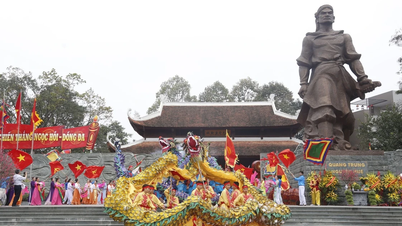

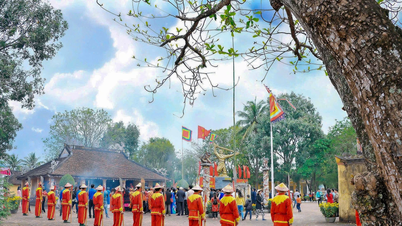





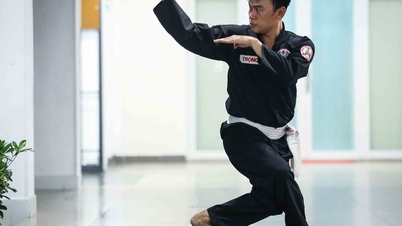



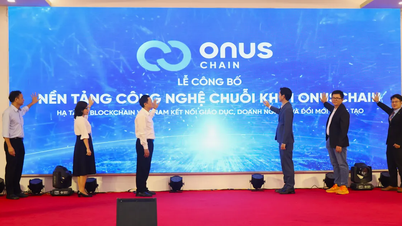







































































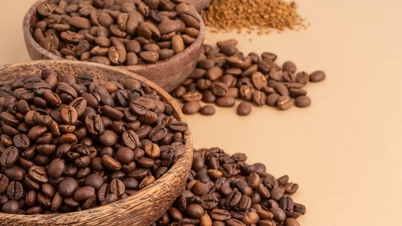



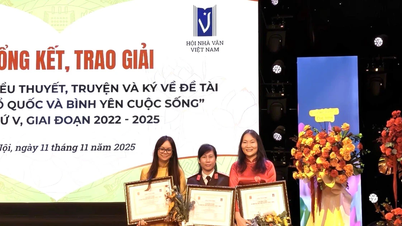




![Dong Nai OCOP transition: [Article 3] Linking tourism with OCOP product consumption](https://vphoto.vietnam.vn/thumb/402x226/vietnam/resource/IMAGE/2025/11/10/1762739199309_1324-2740-7_n-162543_981.jpeg)








Comment (0)